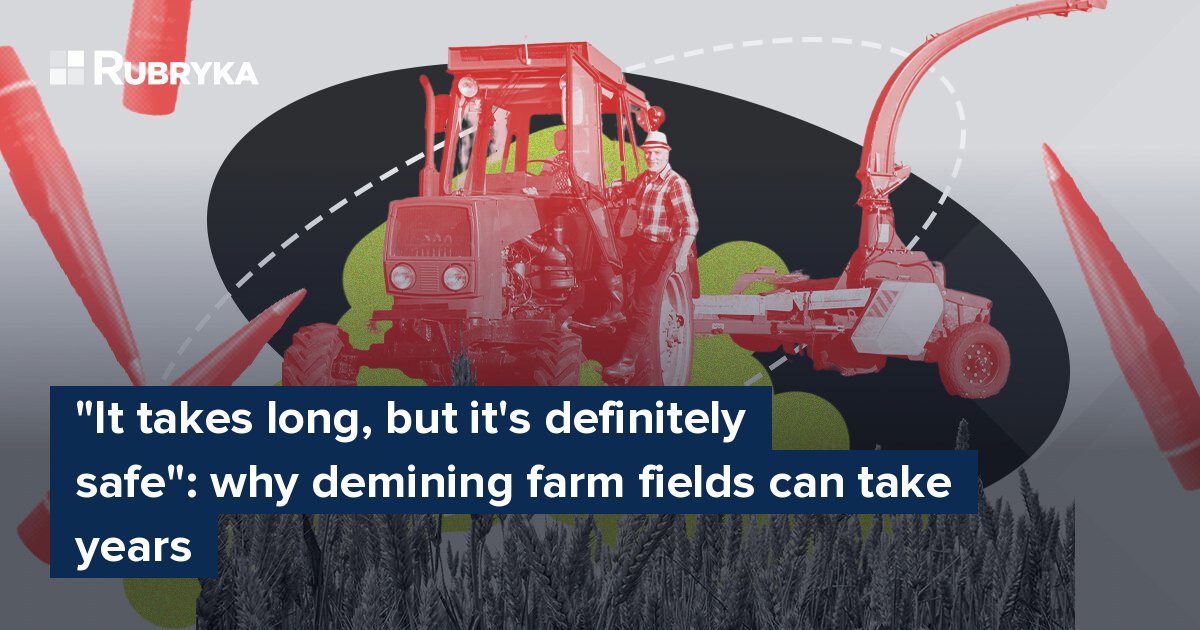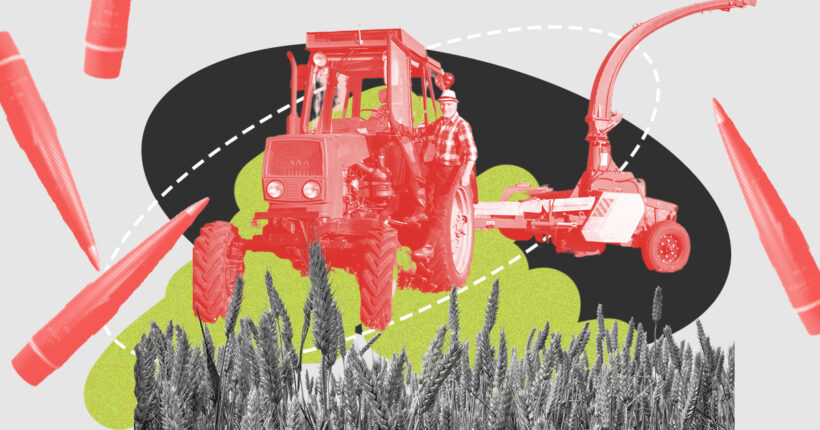
What is the problem?
Yurii Matsiuta, a farmer from Mykolaiv region, faced a grim reality in March 2022 when the Russian army occupied his fields. After their liberation in November, he discovered that all 2,448 hectares of his agricultural land were contaminated with explosives.
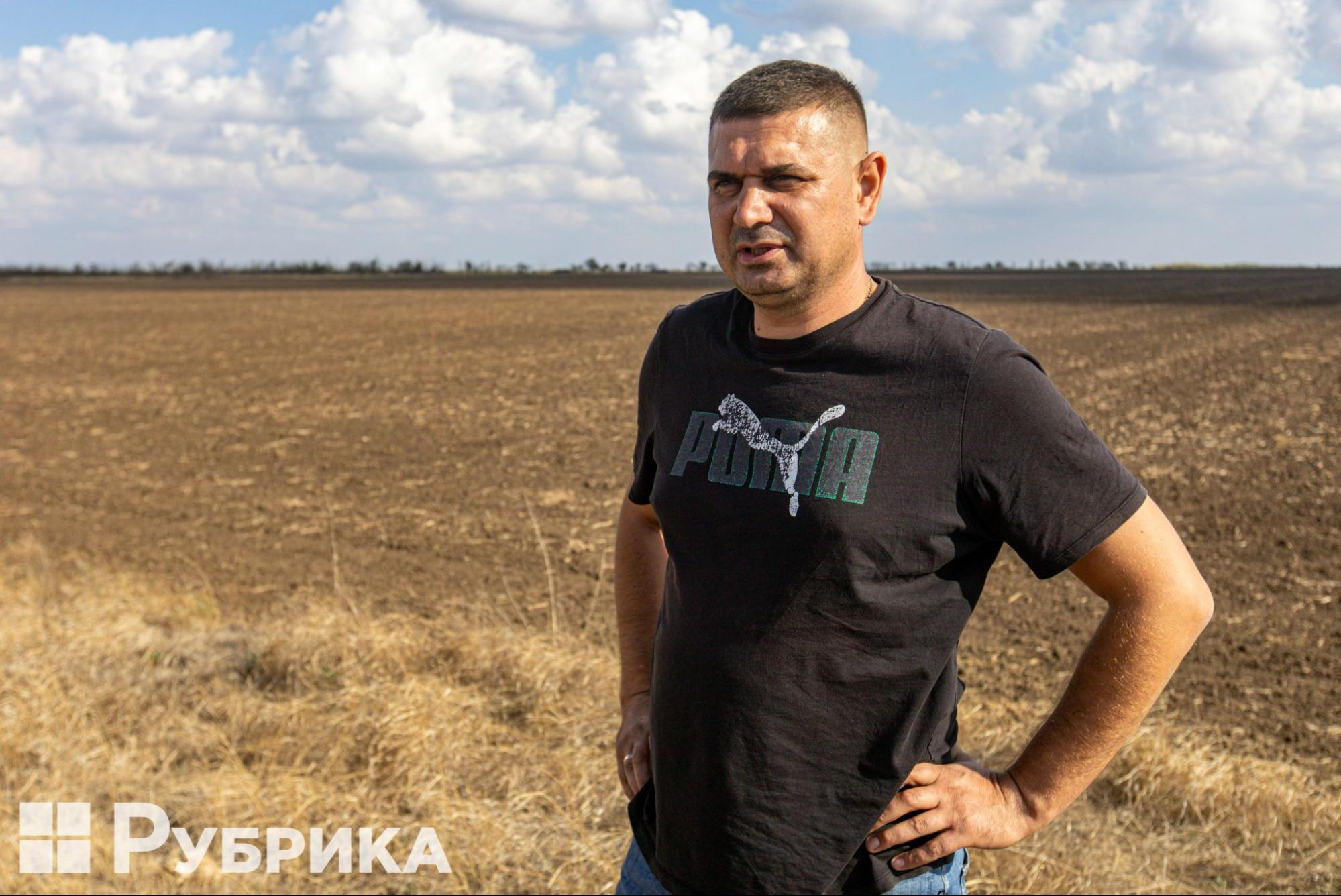
Farmer Yurii Matsiuta
The farmer was able to enter his fields for the first time on February 20, 2023—"they didn't allow it before." Until then, deminers had been clearing the central roads to ensure safe access. Once access was possible, Matsiuta decided he couldn't wait for official demining and took matters into his own hands.
"I found a private company. By the way, they only accepted payment in cash. But I agreed, at my own risk. What else could I do? I had to cultivate the fields and restore them so I could have something to live on," the farmer recalls.
In reality, Matsiuta had enlisted the help of "black sappers"—unlicensed deminers with no certifications to prove their expertise. Despite this, they assured him they could start immediately and finish quickly, so the farmer decided to take the risk.
After the supposed demining, the farmer's workers began cultivating the land with their equipment. However, mines left behind by the "black sappers" continued to surface. Each time one was discovered, the State Emergency Service had to be called to neutralize it. Frustrated, Matsiuta turned to the same sappers again.
Once more, they demanded cash payments and made promises of quick, efficient work. After the second demining, things initially seemed better. But the relief was short-lived. One of Matsiuta's workers was later blown up by a mine while driving a tractor across the field. Thankfully, the worker survived, sustaining only a bruised arm. The tractor, however, was destroyed by 8.5 kilograms of TNT and was abandoned in the field.
After this incident, Matsiuta abandoned his attempts to clear his land and resolved to wait for official demining.
Matsiuta's situation is far from unique. The primary challenge for farmers is the lengthy process: first, waiting for their turn for demining, and then waiting for the work itself to be completed. Meanwhile, they still have to pay employee salaries, land rent, and other costs. This financial strain drives many farmers to attempt demining on their own, stopping only after accidents occur.
As of October 2023, approximately 5.6 million hectares of farmland in Ukraine were mined, according to the Ministry of Economy. The Ukrainian Agrarian Business Club estimates that a single hectare of farmland is valued at $350–450. If this land remains out of use, Ukraine could lose up to $2.5 billion annually, as reported by Economic Pravda
What is the solution?
Options for demining
Since the start of the war in Ukraine, the number of organizations engaged in humanitarian demining with proper documentation and certifications has grown significantly.
As of January 1, 2024, there are 28 certified mine action operators in Ukraine. These organizations are authorized to perform humanitarian demining, though not all are equipped to carry out the actual clearing of explosives. Some are certified only to conduct surveys or provide informational support.
Farmers are strongly advised to entrust their fields only to certified demining operators. While certified demining may take longer—especially given the wait times—it ensures the protection of what matters most: the lives of the farmers and their workers. In contrast, "black sappers" offer no such guarantees.
How does humanitarian demining work?
"I have been working in humanitarian demining for 4 years, but this is the first time I have seen so many mines"
Rubryka joined The HALO Trust, the world's largest humanitarian demining organization, to observe the demining of farmland. Over the past 36 years, The HALO Trust has been clearing mines and explosive ordnance in 30 countries. Now, they are working in Ukraine with all the necessary certifications and documentation.
Here, we explain how the demining process unfolds and why it doesn't proceed as quickly as farmers might hope.
Military sappers and the State Emergency Service are the first to enter liberated areas. They focus on clearing critical infrastructure, and in the case of farm fields, this begins with demining the central roads that provide access to these areas. Ω zzz
Only after this initial work do organizations like The HALO Trust, specializing in humanitarian demining, step in to continue the effort.
First, NTS (Non-Technical Survey) teams assess the territory to determine its condition. They look for signs of mining. If no evidence of mining is found, the NTS prepares documentation confirming the area's safety, allowing farmers to resume work immediately.
However, if the area is still identified as mined, the NTS teams outline its boundaries and the nature of the contamination. They use drones to survey the land and also engage with locals, although the community may be initially distrustful of the deminers.
"At first, they look at us with suspicion, as if we were saboteurs. They don't share much with us at the start, but over time, as they see our work, they begin to tell us where they've seen mines and ammunition," says Oleksandr, the leader of the demining teams.
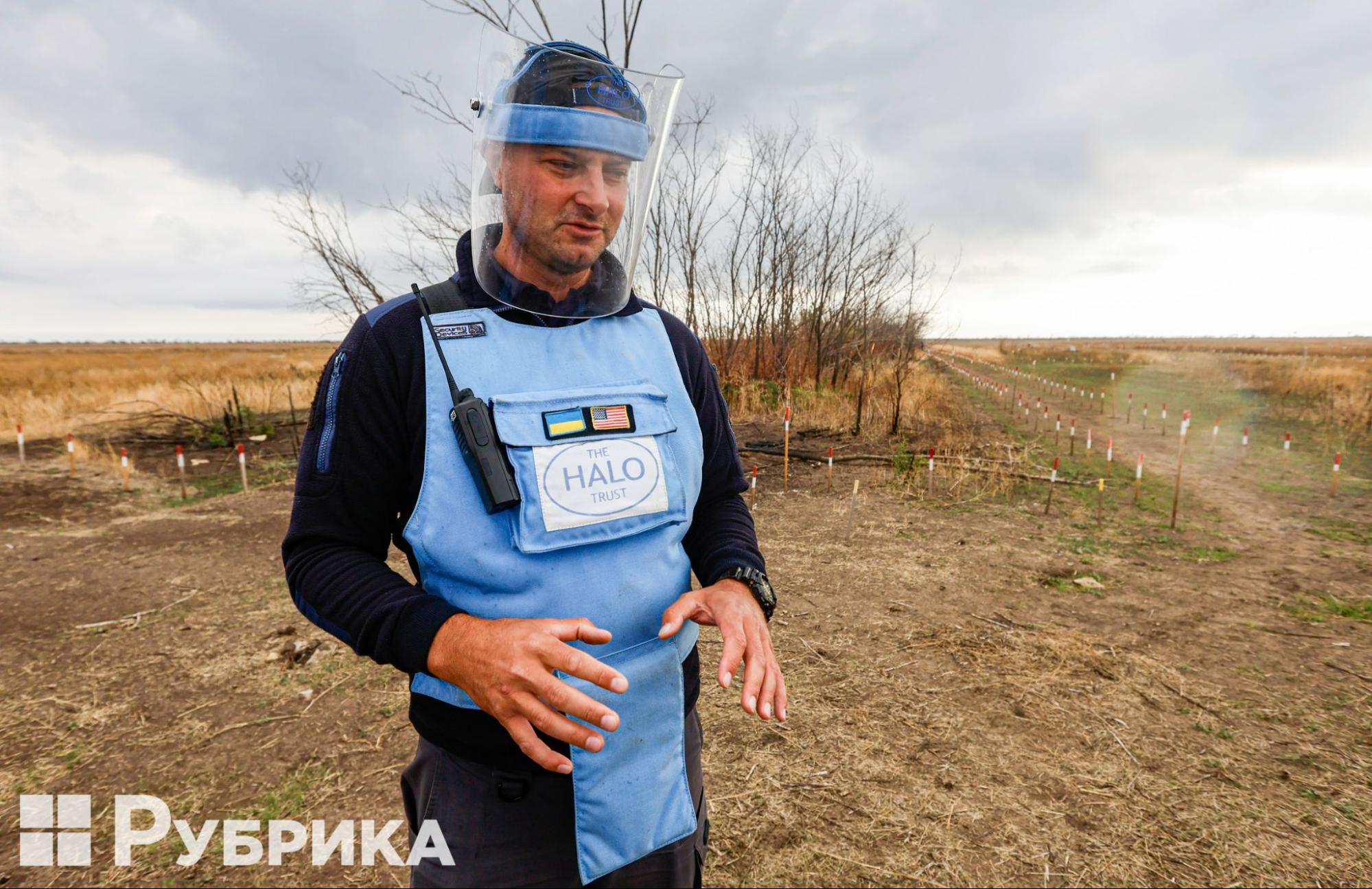
Chief demining team leader Oleksandr.
The NTS teams identify the boundaries of the minefield for demining. After this, the demining or operations department decides the method of demining—whether by hand, machinery, or a combination of both. Each area is named after the nearest settlement and assigned a number.
One of the largest mined areas where HALO is working is called "Bezimenne 3." Located in the Mykolaiv region, this area covers nearly 70,000 square meters. It has been under demining for over a year, but only 3,000 square meters have been cleared so far.
These areas, primarily farm fields, were occupied in March 2022 and later became battlegrounds. As a result, the work is extensive, with anti-personnel and anti-vehicle mines, unexploded ordnance, and shells scattered from damaged Russian warehouses.
"I have been working in humanitarian demining for four years, but this is the first time I have seen so many mines. After 2022, everything has changed a lot. In the east, we mostly dealt with single mines, but here we have two or three lines of mines. In the neighboring field, such a line of mines stretched to the horizon," says Oleksandr.
In the Bezimenne 3 area, the risk of contamination by anti-personnel and anti-vehicle mines is significant. It is precisely because of the potential presence of these mines that the area must be cleared manually. To do so, deminers divide the entire field into squares with designated paths. These paths are the only areas that can be safely traversed, as they are the only ones that have been cleared of mines.
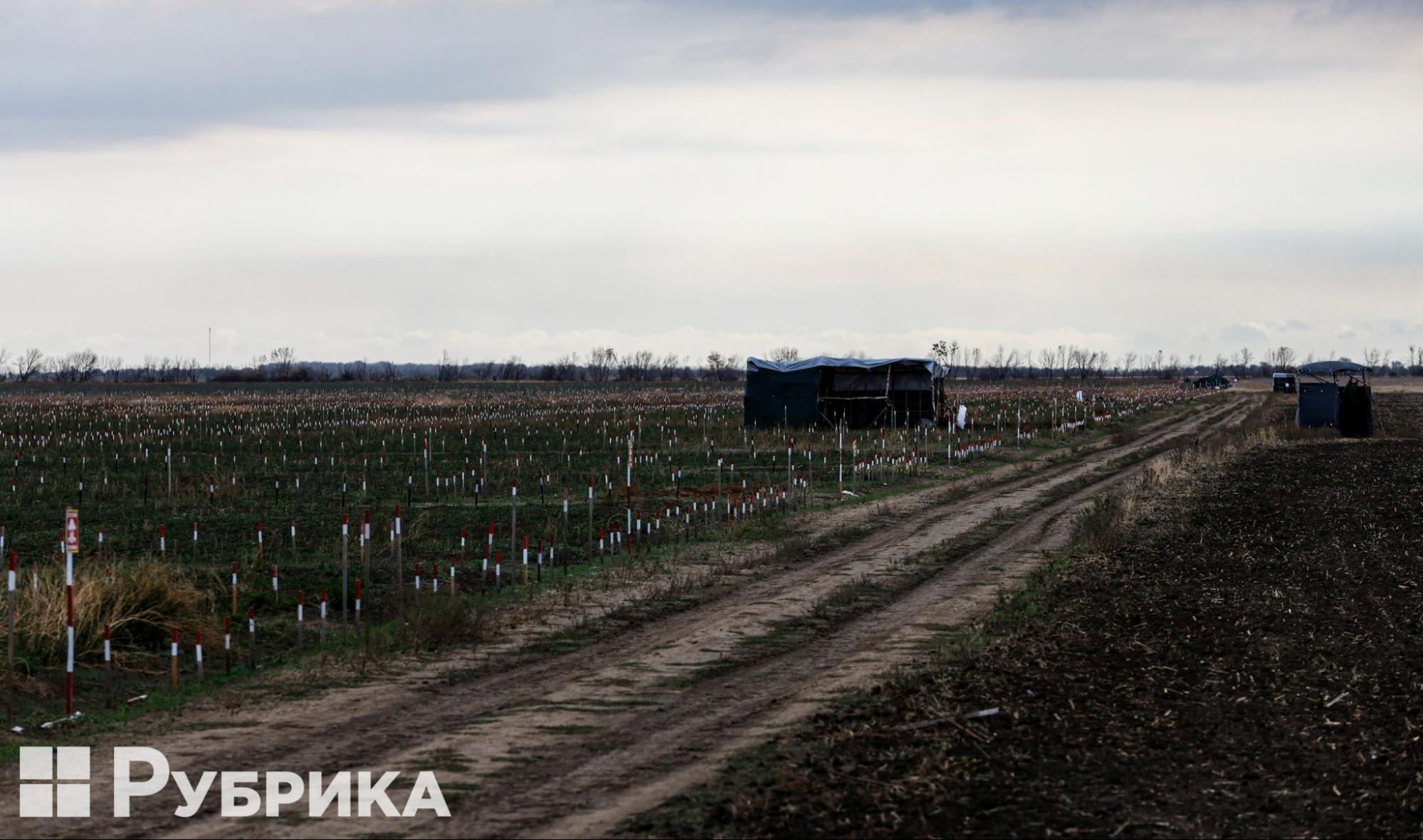
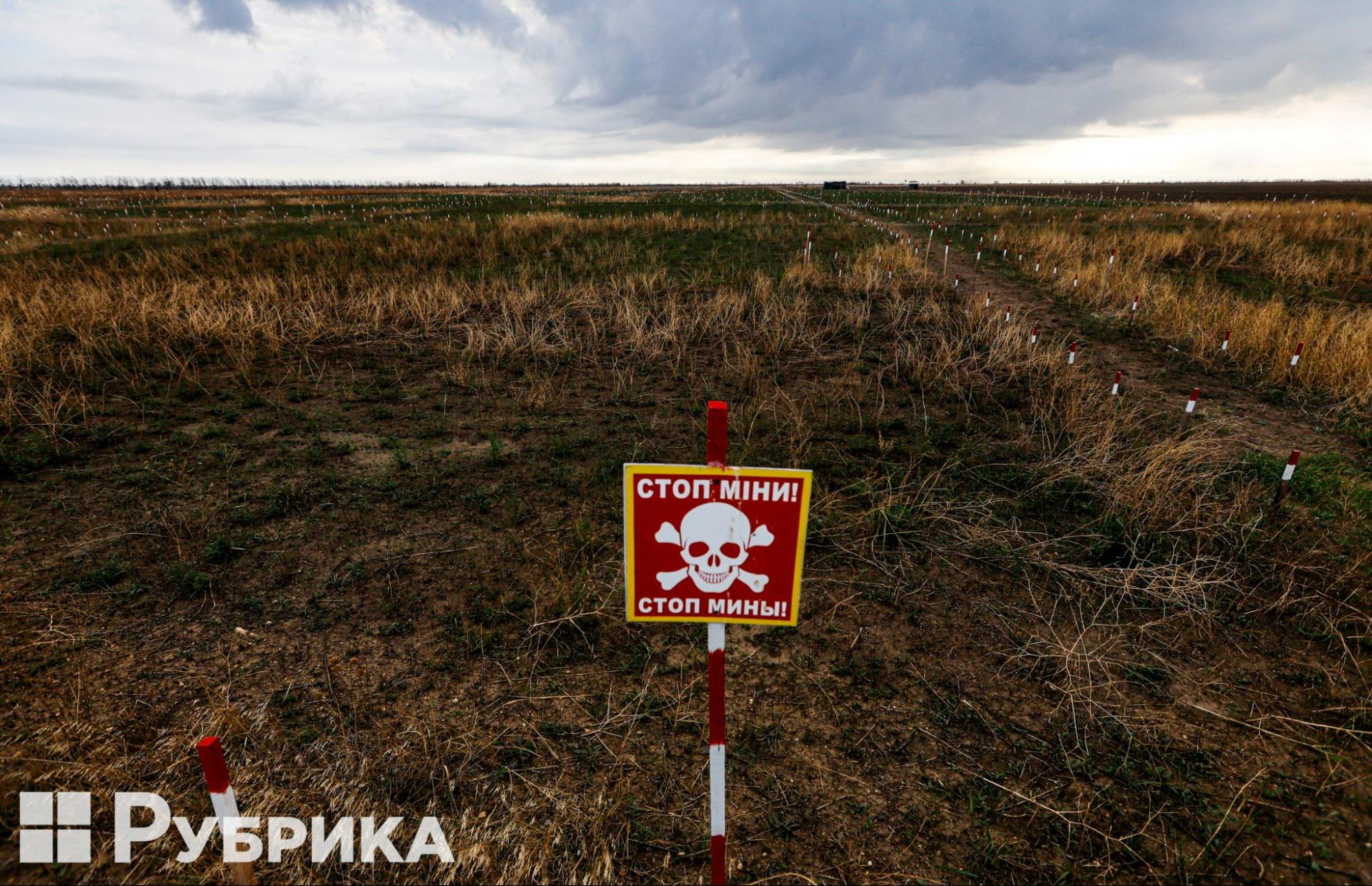
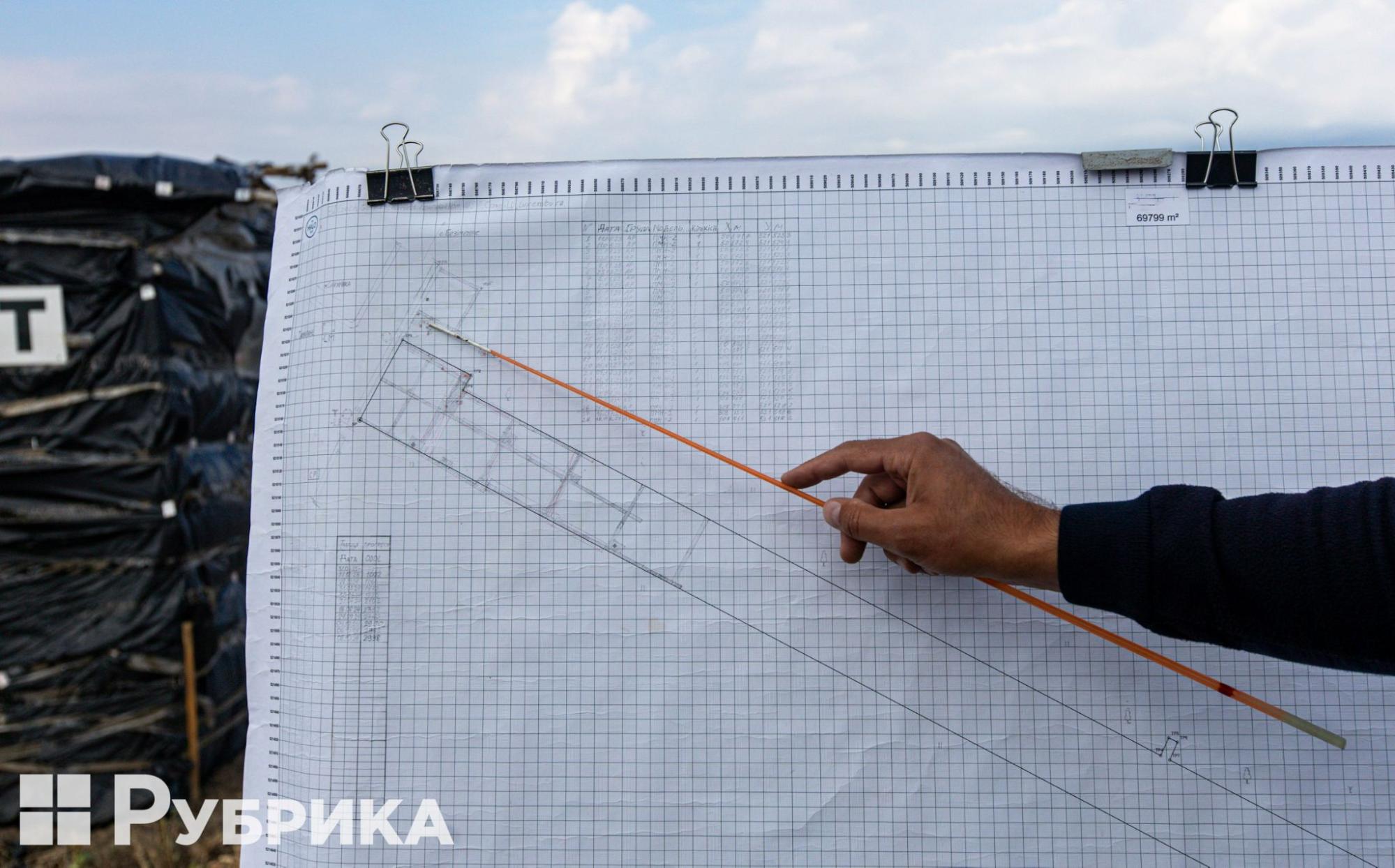
Bezimenne 3 area.
"Danger is everywhere"
One of these deminers is Iryna, who has been working in the field for 17 months. Before the full-scale invasion, she lived in Nova Kakhovka in the Kherson region, and her children and grandchildren still live in the Mykolaiv region. This connection to her family motivated her to change her profession and become a deminer.
"My daughter and her grandchildren live here in the region. It's very difficult to keep the children in one place—sometimes they want to pick flowers, sometimes mushrooms. But it's impossible, as much of the land is mined. That's why I decided to work as a deminer. I need to know what threatens my children and grandchildren and remove it," she says.
When we see Iryna, she is kneeling on a patch of land surrounded by wooden posts, which serve to protect her from potential danger. Her main task now is to extend the cleared path, gradually removing the mines from the land.
First, she checks the mined area for trip wire initiated grenades (TWIG). To do this, Iryna takes out a special tool—a probe, which extends 60 centimeters beyond the marking line. The probe is a thin stick with a white tip, making it easy to spot the wire from the TWIG against the background. Iryna checks in front of her, as well as to the left and right, finding nothing.
Next, the deminer takes a pair of scissors and cuts the grass in front of her to about 15 centimeters above the ground, as it could interfere with her work. She then stands up and picks up the metal detector, holding it about 40 centimeters above the ground to scan the area.
Afterward, she cuts the grass down to the ground level, but without disturbing it. She uses the metal detector once again, passing it over the surface, and hears a signal indicating something metal is buried beneath.
She repeats the process several times to pinpoint the exact location of the signal. Once identified, she places a red marker at the spot where the device responds. Now, her task is to find the source of the signal.
First, Iryna uses a magnet to pass over the ground. The magnet can attract small metal objects or fragments, which might also trigger a signal. However, this time the magnet finds nothing.
"These are all standard operating procedures— a specific sequence of actions that must be followed. It cannot be skipped, because this is what ensures the safety of the deminer and their colleagues nearby," Oleksandr emphasizes.
Next, Iryna picks up a brush to carefully remove the top layer of soil. She then checks again with the magnet. Afterward, she uses a small shovel to begin digging a hole around the marked spot. The hole is 15 centimeters deep, and the distance from the chip is the same. This is a standard procedure because mines are typically found no deeper than this depth.
As she digs, the deminer uncovers a small metal fragment. She carefully retrieves it and places it in a bucket, suspecting it may have been the source of the signal. She then checks with the metal detector again—and the signal is gone. To confirm, she checks a few more times, ensuring there are no further signals. Satisfied, she moves the markers forward, having cleared another 30 centimeters of ground, which took about 15 minutes.
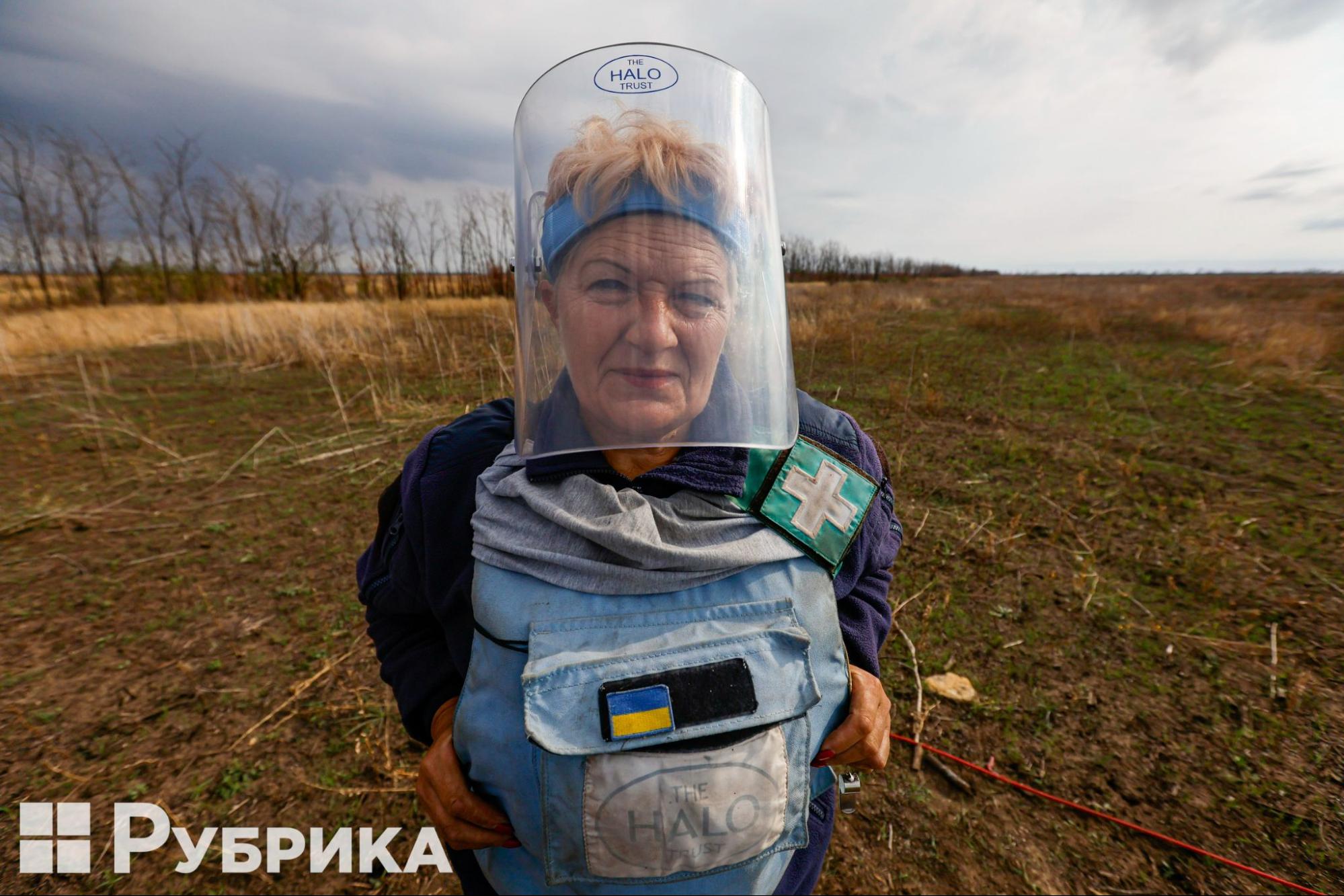
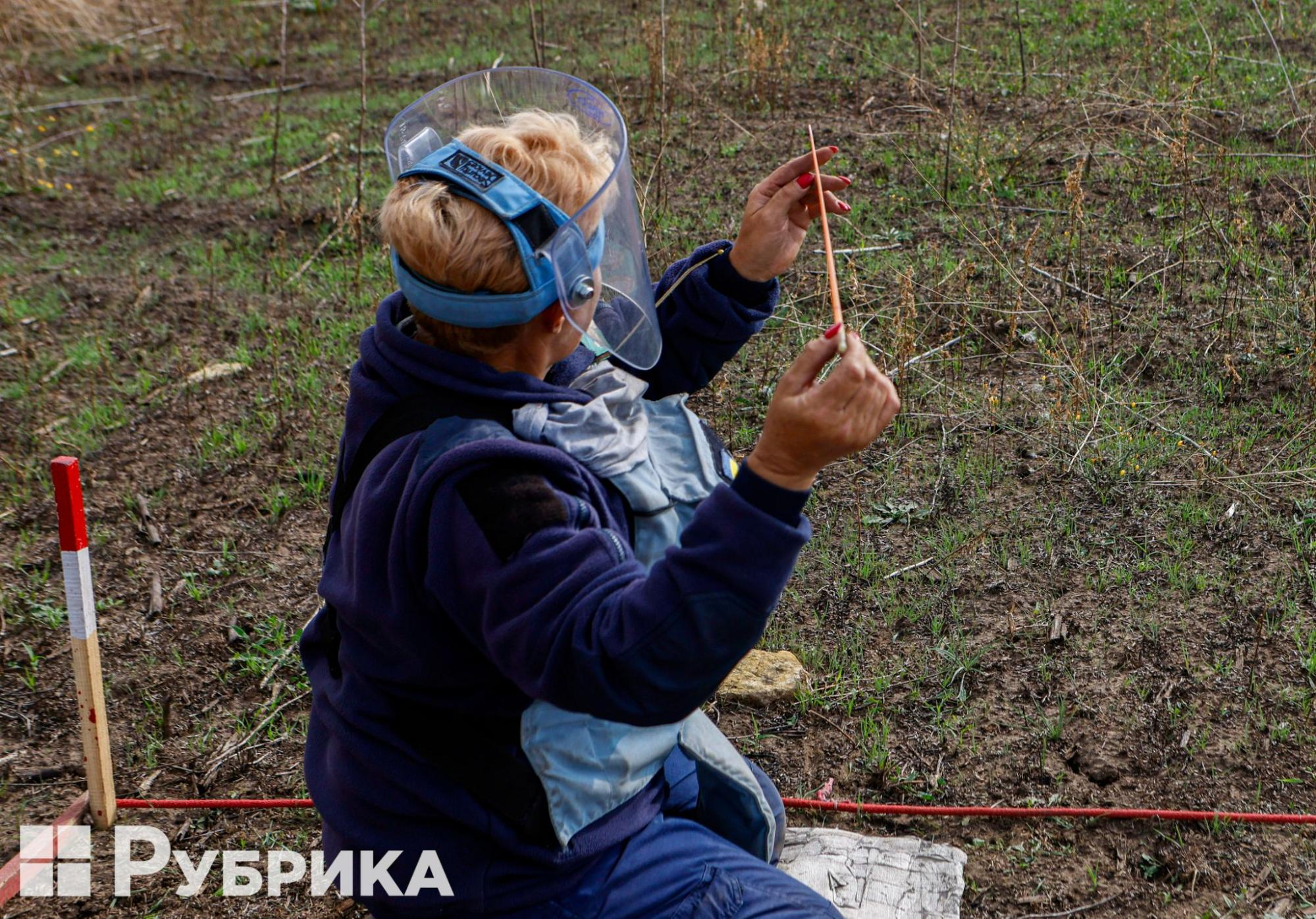
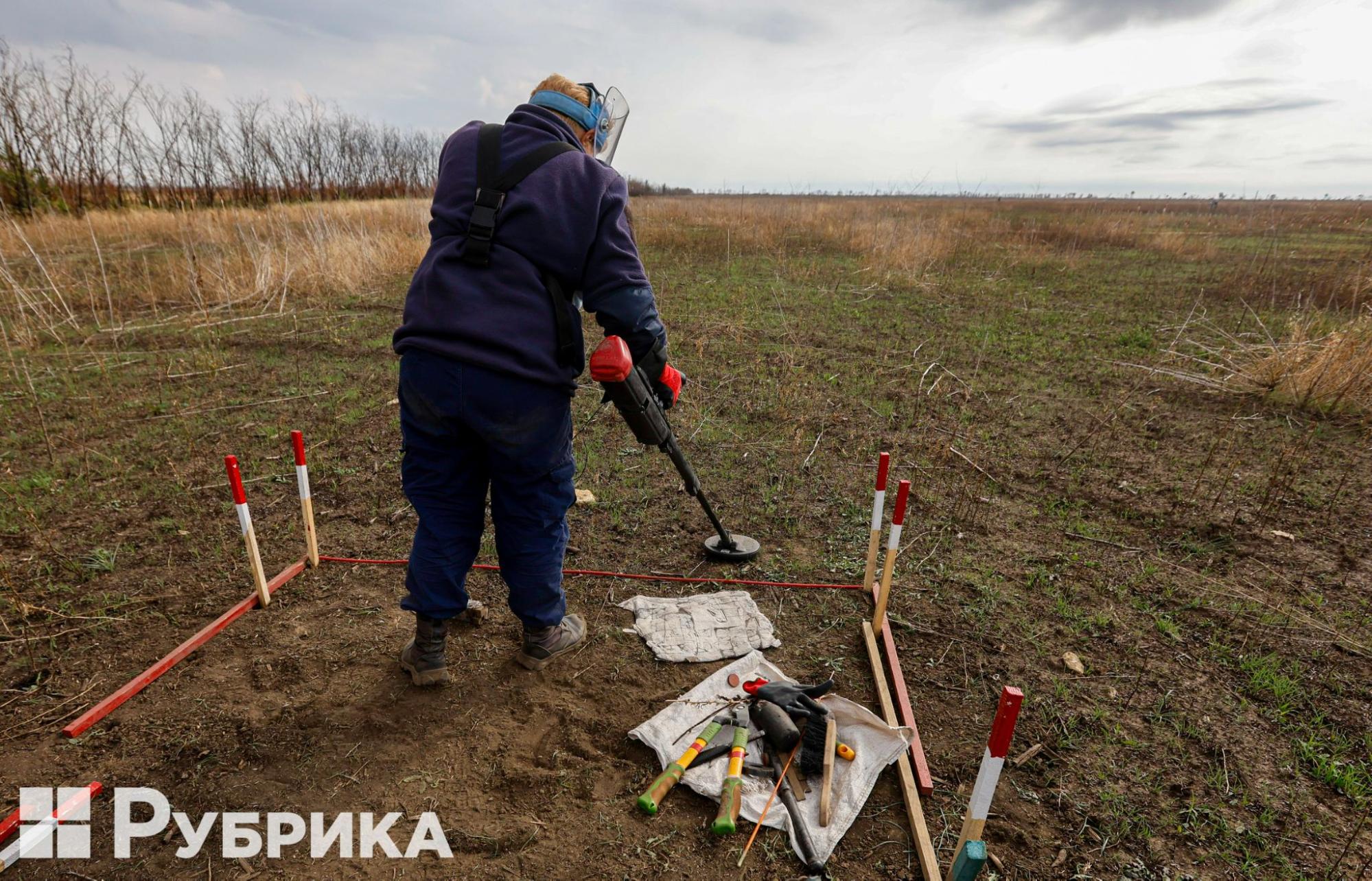
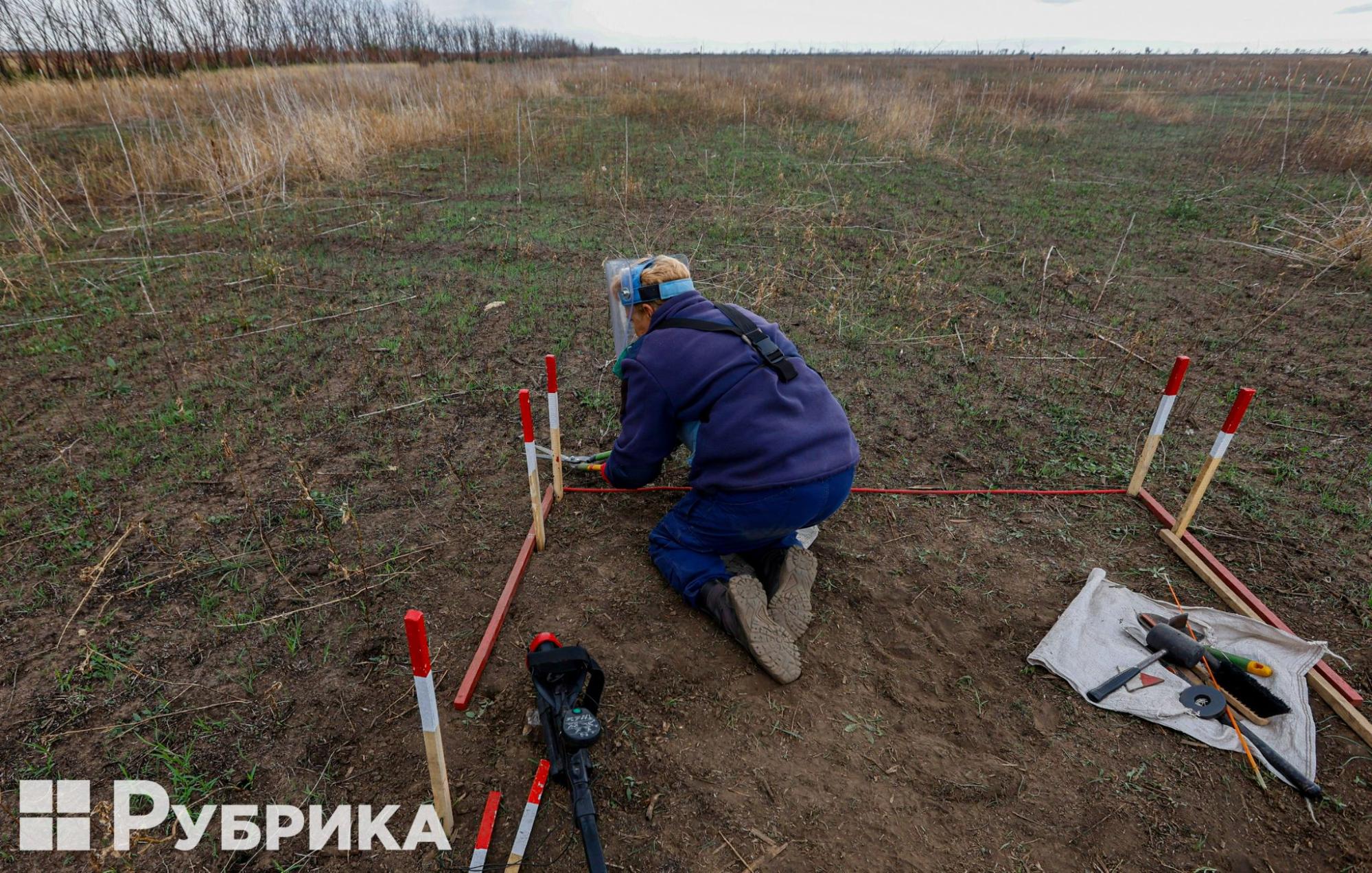
Does it really work?
"It's hard to say how long it will take to clear one such trail. Some days, you find five or six metal objects, and sometimes there are eight signals in one spot. This field is very difficult, very challenging. Though, there are no easy fields, because the danger is everywhere," says Iryna.
The head of the demining teams agrees with her. He cannot predict how long demining this area will take, as it depends on the level and type of contamination. Areas with the threat of anti-vehicle mines are cleared faster than those with anti-personnel mine threats.
"Whenever possible, we use equipment to demine. But when that's not possible, we have to do it manually. Yes, it takes longer, but it is definitely safer. Although we understand the farmers' desire to finish quickly, safety and the quality of demining are the priorities," concludes Oleksandr.
Since beginning operations in Ukraine, The HALO Trust has cleared 6 million square meters of land out of the 30.5 million square meters identified as contaminated in non-technical surveys. Of this, 48% is farmland. Currently, 57% of the mined areas The HALO Trust is working on are agricultural lands. The organization has discovered over 32,000 mines and other explosive devices, with 75% of these found on agricultural land.



